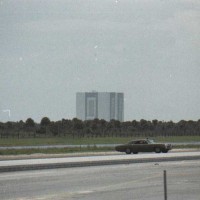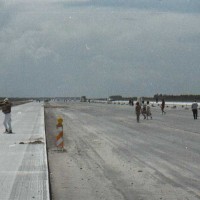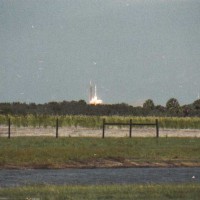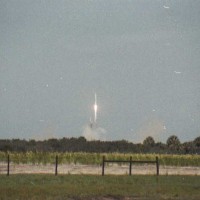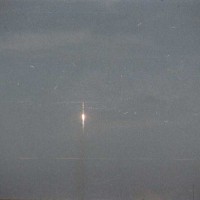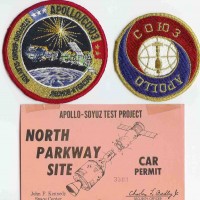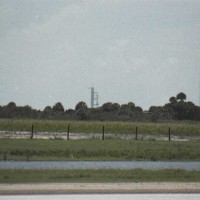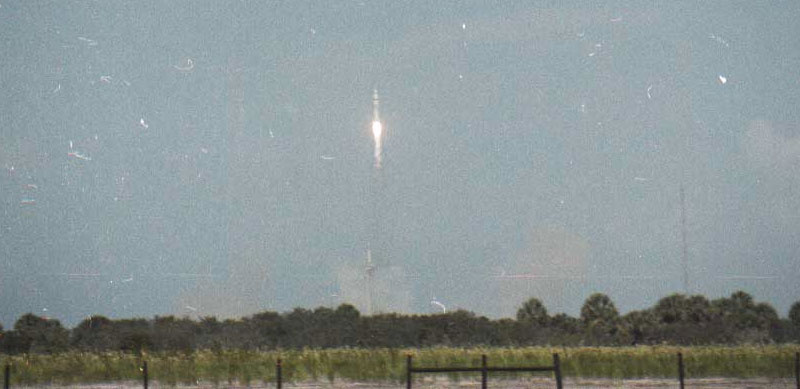
30th Anniversary of the Apollo-Soyuz Test Project
July 2005 :
I'm not sure what came first...the idea to spend a two-week vacation in Florida, or the possible opportunity to observe the last rocket launch in the history of the Apollo program.
Fortunately, both came together. Dan Lorraine's uncle worked for NASA down at Cape Canaveral. Dan knew that permits were granted to the public to allow a specific number of visitors to view the launch from a safe distance at the space center. He requested such a pass from his uncle, and sure enough, the permit was issued. See one of the accompanying images of this pass.
So the entire trip was planned around the scheduled launch date and time of July 15, 1975, at 3:50 pm EDT. An old photography friend of mine, Joe Calo, decided to join me on this excursion. This was our first trip to Florida, so of course we also took in all the attractions.
But the greatest thrill of all was the day of the launch. Instead of camping the night before the launch, we picked an ocean-side cottage motel just south of Daytona Beach to spend the night. The key factor here was they had a color televison so we could get up early and watch the launch of the Soyuz spacecraft from Russia first thing in the morning. Well, we both slept through the alarm and woke up about two minutes after the Russian launch. We hadn't missed much. The "feed" in those days wasn't great, and the image that had been recorded was terrible.
We soon left the motel and traveled down to the Kennedy Space Center. The traffic was quite heavy. Folks without passes were starting to line the roads that provided a view to the launch facilities to the east of route A1A. We soon got onto the base and our permit allowed us to get within a couple of miles from launch complex 39B. In fact, the area where we parked our vehicle and set up our cameras was the future runway for the space shuttle to land. It was already under construction (see one of the images).
A lot of people had access to this observing vantage point. They just kept coming and coming. It was a hot day, and we stood or sat out in the sun most of the time. There was nothing around to shade us from the heat anyway.
Well, the countdown continued and eventually everyone's gaze was directed toward the launch pad and Apollo. This was not the Saturn 5 rocket. To get the command module into orbit only required its smaller cousin, the Saturn 1B. Since that extra stage was not required for this mission, the spacecraft, missing the first stage, sat atop a platform.
We had a local radio station on so we could follow the chatter between the astronauts and mission control. Then the famous countdown sequence began ... 10, 9, 8, 7, 6, 5, 4, 3, 2, 1 .... Flames leaped from the mighty engines and Apollo began its ascent into the late afternoon sky, which had only scattered clouds. It was beautiful. I had watched so many of the Mercury, Gemini and Apollo launches from my living room. Now I was experiencing a launch firsthand. I was so busy taking pictures through my camera that I'm not sure I even took time to view it without looking through the telephoto lens. Soon the roar of the engines reached us. Wow! It was quite loud. And this was only a Saturn 1B. I can only imagine what the noise was like when the Saturn 5's used to blast off. As I continued to click off the images, I could hear the cheers and applause of the assembled crowd. I get goose bumps even now as I recall how I felt. It didn't take long for Apollo to ascend out of sight. My adrenaline was still pumping for some time afterwards.
You too can get a feel for the excitement we experienced that summer day at Cape Canaveral. Please see the images accompanying this article.
It took us a while to leave the area because of all the traffic. But we didn't really care. Though we still had about a week and a half of vacation left and a whole lot of adventure ahead of us, I must say witnessing the last launch of the Apollo program was definitely the highlight of the trip. Many thanks are owed to Dan Lorraine and his uncle for facilitating this opportunity of a lifetime.
Related Topics

Spaceflight




